Themed collection 2015 Journal of Materials Chemistry A Hot Papers

Polymerized ionic liquid block copolymers for electrochemical energy
Polymerized ionic liquid (PIL) block copolymers are an emerging class of polymers that synergistically combine the benefits of both ionic liquids (ILs) and block copolymers into one, where the former possesses a unique set of physiochemical properties and the latter self assembles into a range of nanostructures.
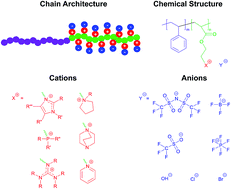
J. Mater. Chem. A, 2015,3, 24187-24194
https://doi.org/10.1039/C5TA07170D
Solar-powered electrochemical energy storage: an alternative to solar fuels
The solar-powered electrochemical energy storage strategy integrates the solar energy conversion, storage and distribution functions into a single device.
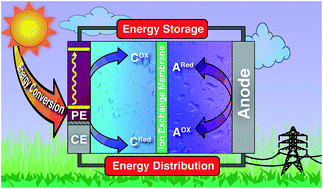
J. Mater. Chem. A, 2016,4, 2766-2782
https://doi.org/10.1039/C5TA06950E
Electrospun nanofibers as a platform for advanced secondary batteries: a comprehensive review
A comprehensive review of the recent development of electrospun nanofibers as platform materials for advanced secondary batteries is presented.
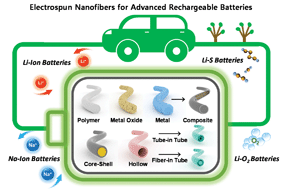
J. Mater. Chem. A, 2016,4, 703-750
https://doi.org/10.1039/C5TA06844D
Layered LnBaCo2O5+δ perovskite cathodes for solid oxide fuel cells: an overview and perspective
Aligned with an ever growing interest to reduce the operating temperature of solid oxide fuel cells (SOFCs), the A-site ordered LnBaCo2O5+δ layered perovskite family has been actively investigated as cathodes during the last decade. This review aims to provide the recent progress in the LnBaCo2O5+δ family with regard to crystal structure, chemical composition, properties, performances, and chemical stability.
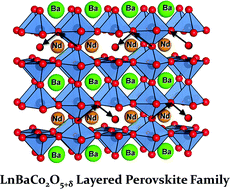
J. Mater. Chem. A, 2015,3, 24195-24210
https://doi.org/10.1039/C5TA06212H
Interface engineering for high-performance perovskite hybrid solar cells
In this review, we present recent advances in interface engineering at different interfaces in perovskite solar cells.
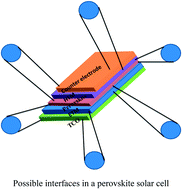
J. Mater. Chem. A, 2015,3, 19205-19217
https://doi.org/10.1039/C5TA04340A
Graphene based metal and metal oxide nanocomposites: synthesis, properties and their applications
The development of graphene based metal and metal oxide nano composites is reviewed with special focus on their synthesis and their applications in electronics, batteries, solar cells and analytics.
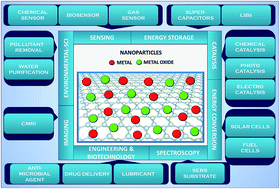
J. Mater. Chem. A, 2015,3, 18753-18808
https://doi.org/10.1039/C5TA02240A
One-dimensional nanostructures for flexible supercapacitors
We review the recent research progress in one-dimensional nanostructured materials for different structured flexible supercapacitors.
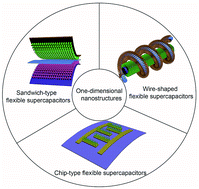
J. Mater. Chem. A, 2015,3, 16382-16392
https://doi.org/10.1039/C5TA03467A
Recent progress in photocathodes for hydrogen evolution
Recent efforts to improve the performance of photocathodes for hydrogen evolution are reviewed.

J. Mater. Chem. A, 2015,3, 15824-15837
https://doi.org/10.1039/C5TA03594E
Carbothermal synthesis of metal-functionalized nanostructures for energy and environmental applications
Carbothermal reduction could be employed as a facile technology for the synthesis of various novel materials, especially transition-metal-functionalized nanostructures.
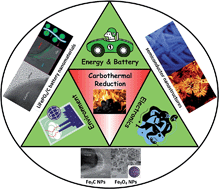
J. Mater. Chem. A, 2015,3, 13114-13188
https://doi.org/10.1039/C5TA01228G
Graphene: a multipurpose material for protective coatings
This article reviews and discusses the potentialities, challenges and progress of graphene for application in multifunctional protective coatings.
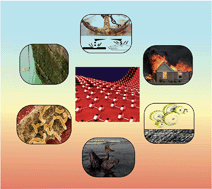
J. Mater. Chem. A, 2015,3, 12580-12602
https://doi.org/10.1039/C5TA01010A
Halide perovskite materials for solar cells: a theoretical review
First-principles calculations help to understand the fundamental mechanisms of the emerging perovskite solar cells and guide further developments.
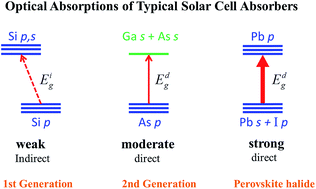
J. Mater. Chem. A, 2015,3, 8926-8942
https://doi.org/10.1039/C4TA05033A
Nanostructured anode materials for lithium ion batteries
High-energy consumption in our day-to-day life can be balanced not only by harvesting pollution-free renewable energy sources, but also requires proper storage and distribution of energy. In this regard, lithium ion batteries are currently considered as effective energy storage devices and are involved in the most active research.
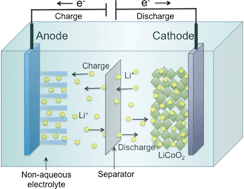
J. Mater. Chem. A, 2015,3, 2454-2484
https://doi.org/10.1039/C4TA04980B
Porous Na3V2(PO4)3@C nanoparticles enwrapped in three-dimensional graphene for high performance sodium-ion batteries
We introduced a new strategy to synthesize NVP nanoparticles with a thin carbon-coating layer embedded in a three-dimensional (3D) graphene network.
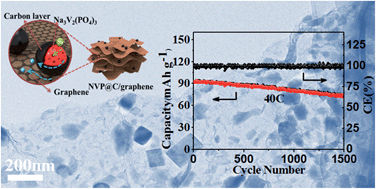
J. Mater. Chem. A, 2016,4, 1180-1185
https://doi.org/10.1039/C5TA08869K
A hexacyclic ladder-type building block for high-performance D–A copolymers
Two D–A copolymers PThTITI and PSeTITI were developed by copolymerizing a novel ladder-type building block TITI with thiophene (Th) or selenophene (Se). PThTITI:PC71BM and PSeTITI:PC71BM solar cells gave PCEs of 5.53% and 6.17%, respectively.
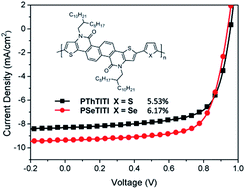
J. Mater. Chem. A, 2015,3, 24211-24214
https://doi.org/10.1039/C5TA07942J
Bimetallic nickel cobalt selenides: a new kind of electroactive material for high-power energy storage
For the first time, bimetallic Ni–Co selenides are synthesized and show improved power-delivery and energy-storage performance.
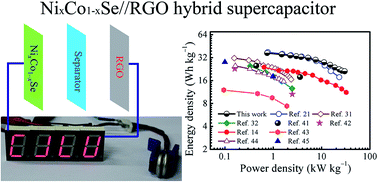
J. Mater. Chem. A, 2015,3, 23653-23659
https://doi.org/10.1039/C5TA08366D
Lithium storage in a highly conductive Cu3Ge boosted Ge/graphene aerogel
A Cu3Ge/Ge@G aerogel was synthesized via a simple pyrolysis route and directly employed as a high performance anode for lithium-ion batteries.

J. Mater. Chem. A, 2015,3, 22552-22556
https://doi.org/10.1039/C5TA06862B
“Sea cucumber”-like Ti@MoO3 nanorod arrays as self-supported lithium ion battery anodes with enhanced rate capability and durability
“Sea cucumber”-like Ti@MoO3 nanorod arrays show enhanced rate capability and excellent durability as self-supported lithium ion battery anodes.
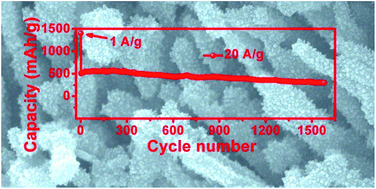
J. Mater. Chem. A, 2015,3, 22547-22551
https://doi.org/10.1039/C5TA07107K
Compositionally-tunable mechanochemical synthesis of ZnxCo3−xO4 nanoparticles for mesoporous p-type photocathodes
A solid-state mechanochemical synthesis of ZnxCo3−xO4 was developed with highly tunable Zn concentration.

J. Mater. Chem. A, 2015,3, 21990-21994
https://doi.org/10.1039/C5TA07491F
Stackable, three dimensional carbon–metal oxide composite for high performance supercapacitors
We report a stackable all-solid-state supercapacitor based on three dimensional PPy–NiO/RGO–CNT electrodes.
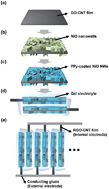
J. Mater. Chem. A, 2015,3, 20459-20464
https://doi.org/10.1039/C5TA06266G
A zeolitic imidazole framework (ZIF)–sponge composite prepared via a surfactant-assisted dip-coating method
A rapid, simple and inexpensive dip-coating method is developed to prepare a three-dimensional hierarchical zeolitic imidazole framework (ZIF) composite using the commercially available melamine sponge as a support.
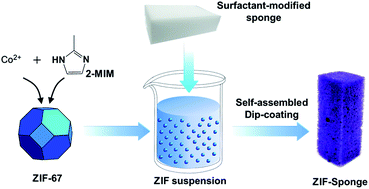
J. Mater. Chem. A, 2015,3, 20060-20064
https://doi.org/10.1039/C5TA04427H
Crystal defect-mediated band-gap engineering: a new strategy for tuning the optical properties of Ag2Se quantum dots toward enhanced hydrogen evolution performance
Defect-rich Ag2Se QDs were prepared controllably for sensitizing TiO2 toward high-performance visible-light-driven hydrogen-evolution photocatalysts.
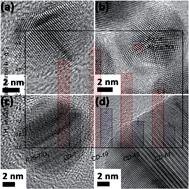
J. Mater. Chem. A, 2015,3, 20051-20055
https://doi.org/10.1039/C5TA04978D
Self-supported NiMo hollow nanorod array: an efficient 3D bifunctional catalytic electrode for overall water splitting
A NiMo hollow nanorod array is developed on Ti mesh via a template-assisted electrodeposition method as a bifunctional electrode for water splitting.
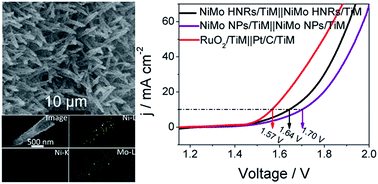
J. Mater. Chem. A, 2015,3, 20056-20059
https://doi.org/10.1039/C5TA04723D
Towards efficient electrocatalysts for oxygen reduction by doping cobalt into graphene-supported graphitic carbon nitride
A highly efficient electrocatalyst is developed by chemical coordination of cobalt species with g-C3N4 layers which are homogeneously supported on reduced graphene oxide.

J. Mater. Chem. A, 2015,3, 19657-19661
https://doi.org/10.1039/C5TA05776K
Solution-deposited pure selenide CIGSe solar cells from elemental Cu, In, Ga, and Se
A novel, robust and low-toxicity solution route to deposit CIGSe thin films for solar cell applications is proposed. The solvent of 1,2-ethanedithiol and 1,2-ethylenediamine is employed for the first time to simultaneously dissolve elemental Cu, In, Ga, and Se. With this solution-processed CIGSe thin film solar cell, an efficiency of 9.5% was achieved.
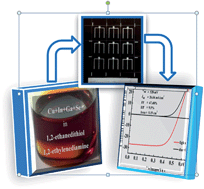
J. Mater. Chem. A, 2015,3, 19263-19267
https://doi.org/10.1039/C5TA05300E
Vertically aligned graphene nanosheets on silicon using an ionic liquid electrolyte: towards high performance on-chip micro-supercapacitors
Vertically oriented graphene nanosheets were synthesized by an alternative and simple approach based on electron cyclotron resonance-plasma enhanced chemical vapor deposition (ECR-CVD) onto highly doped silicon substrates.
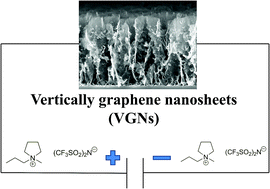
J. Mater. Chem. A, 2015,3, 19254-19262
https://doi.org/10.1039/C5TA04578A
Enhanced energy and O2 evolution efficiency using an in situ electrochemically N-doped carbon electrode in non-aqueous Li–O2 batteries
N-doped carbon materials were prepared by in situ electrochemical pre-treatment of a carbon electrode in a deaerated non-aqueous electrolyte containing lithium nitrate.
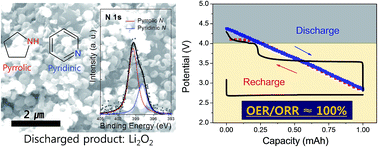
J. Mater. Chem. A, 2015,3, 18843-18846
https://doi.org/10.1039/C5TA03657G
Ultra-lightweight PANiNF/MWCNT-functionalized separators with synergistic suppression of polysulfide migration for Li–S batteries with pure sulfur cathodes
A custom separator with an ultra-lightweight polyaniline nanofiber/multiwall carbon nanotube (PANiNF/MWCNT) coating has been utilized to improve the electrochemical performance of lithium–sulfur (Li–S) batteries.
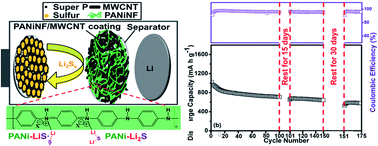
J. Mater. Chem. A, 2015,3, 18829-18834
https://doi.org/10.1039/C5TA05053G
Reduction of graphene oxide in Li-ion batteries
We report a simple in situ approach to reduce graphene oxide in Li-ion batteries. This electrochemical method to reduce graphene oxide could be used in graphene-based electrode fabrication.
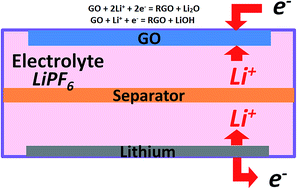
J. Mater. Chem. A, 2015,3, 18360-18364
https://doi.org/10.1039/C5TA05068E
Cobalt selenide: a versatile cocatalyst for photocatalytic water oxidation with visible light
A versatile sustainable cocatalyst has been incorporated with g-C3N4 to construct surface contacts for photocatalytic water oxidation.
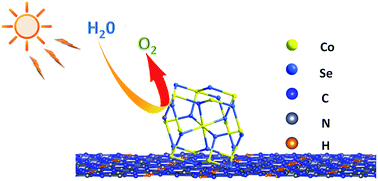
J. Mater. Chem. A, 2015,3, 17946-17950
https://doi.org/10.1039/C5TA04767F
Engineering 2D multi-layer graphene-like Co3O4 thin sheets with vertically aligned nanosheets as basic building units for advanced pseudocapacitor materials
Olivaceous 2D multi-layer graphene-like Co3O4 thin sheets (CQU-Chen-Co-O-1) with vertically aligned nanosheets as basic building units were first prepared and they exhibited excellent pseudocapacitive performance.
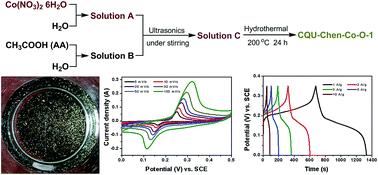
J. Mater. Chem. A, 2015,3, 17525-17533
https://doi.org/10.1039/C5TA05305F
A highly efficient zinc catalyst for selective electroreduction of carbon dioxide in aqueous NaCl solution
A low-cost nanoscale zinc catalyst, prepared by a facile electrochemical strategy, exhibits high activity toward electrochemical reduction of CO2 to CO with up to 93% Faraday efficiency in aqueous NaCl solution.
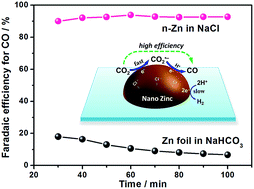
J. Mater. Chem. A, 2015,3, 16409-16413
https://doi.org/10.1039/C5TA04102C
A facile solution approach to W,N co-doped TiO2 nanobelt thin films with high photocatalytic activity
W,N co-doped anatase TiO2 nanobelt films were synthesized by direct oxidation of metallic Ti substrates with H2O2 solutions containing H2WO4 and C3H6N6 at 80 °C, followed by a subsequent calcination. The photocatalytic activity of the W,N co-doped anatase TiO2 nanobelt films was nearly three times that of undoped alkali-hydrothermal synthesized anatase TiO2 nanobelt films, under UV and visible light illumination.
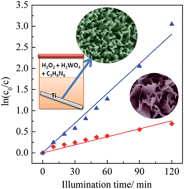
J. Mater. Chem. A, 2015,3, 15863-15868
https://doi.org/10.1039/C5TA03918E
Metal–organic framework–graphene oxide composites: a facile method to highly improve the proton conductivity of PEMs operated under low humidity
Nafion based proton exchange membranes (PEMs) modified by a metal–organic framework–graphene oxide composite (ZIF-8@GO) are reported.
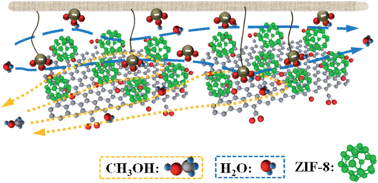
J. Mater. Chem. A, 2015,3, 15838-15842
https://doi.org/10.1039/C5TA03507D
A general strategy of decorating 3D carbon nanofiber aerogels derived from bacterial cellulose with nano-Fe3O4 for high-performance flexible and binder-free lithium-ion battery anodes
A novel flexible nano-Fe3O4-decorated three-dimensional carbon nanofiber aerogel derived from bacterial cellulose was fabricated via a hydrothermal approachfollowed by carbonization.

J. Mater. Chem. A, 2015,3, 15386-15393
https://doi.org/10.1039/C5TA03688G
Polyelectrolyte based hole-transporting materials for high performance solution processed planar perovskite solar cells
Using polyelectrolytes (P3CT-Na) as hole-transporting materials (HTMs), high performance inverted perovskite solar cells with a PCE of 16.6% could be obtained, which was more than 20% improvement compared with those based on the PEDOT:PSS HTM (PCE of 13.7%).
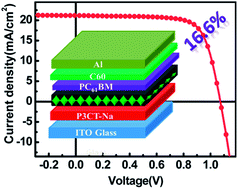
J. Mater. Chem. A, 2015,3, 15024-15029
https://doi.org/10.1039/C5TA04712A
Amorphous Co-doped MoS2 nanosheet coated metallic CoS2 nanocubes as an excellent electrocatalyst for hydrogen evolution
Amorphous Co-doped MoS2 nanosheet coated metallic CoS2 nanocubes with ultrahigh HER activity were prepared via one-pot hydrothermal synthesis.
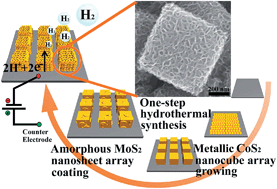
J. Mater. Chem. A, 2015,3, 15020-15023
https://doi.org/10.1039/C5TA03410H
A rectification-free piezo-supercapacitor with a polyvinylidene fluoride separator and functionalized carbon cloth electrodes
The integration of energy harvesting and energy storage in this device not only enables the conversion of ambient energy into electricity, but also provides a sustainable power source for various electronic devices and systems.
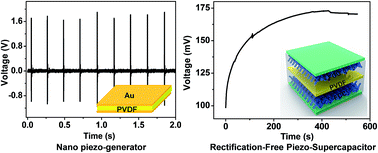
J. Mater. Chem. A, 2015,3, 14963-14970
https://doi.org/10.1039/C5TA03349G
Enhanced solar performance of chemical bath deposited-Zn(O,S)/Cu(In,Ga)Se2 solar cells via interface engineering by a wet soaking process
A facile wet soaking process was proposed to reduce the defects in the CIGS absorption layer, yielding the significantly enhanced cell efficiency from ~1% to ~6.4%.
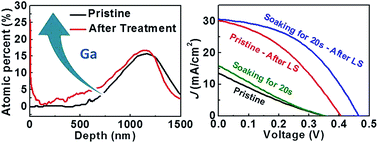
J. Mater. Chem. A, 2015,3, 14985-14990
https://doi.org/10.1039/C5TA03211C
A strategy for breaking the MOF template to obtain small-sized and highly dispersive polyoxometalate clusters loaded on solid films
Highly dispersed and small sized POM nanoclusters that were fabricated using MOF materials can result in a significant performance enhancement of QDSCs.

J. Mater. Chem. A, 2015,3, 14573-14577
https://doi.org/10.1039/C5TA03259H
An in situ and general preparation strategy for hybrid metal/semiconductor nanostructures with enhanced solar energy utilization efficiency
We report a facile method for direct growth of noble metal nanoparticles on semiconductor nanostructures through an in situ redox reaction.
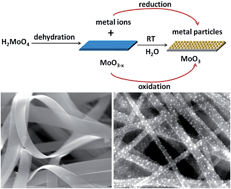
J. Mater. Chem. A, 2015,3, 14550-14555
https://doi.org/10.1039/C5TA03612G
A spray drying approach for the synthesis of a Na2C6H2O4/CNT nanocomposite anode for sodium-ion batteries
Sodium-ion batteries have attracted extensive attention for large-scale energy storage applications for renewable energy and smart grids owing to their abundant sodium resources and potential low cost.
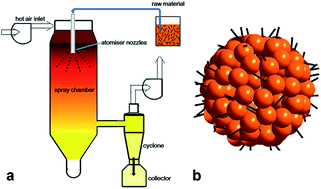
J. Mater. Chem. A, 2015,3, 13193-13197
https://doi.org/10.1039/C5TA03192C
A novel method for the development of a carbon quantum dot/carbon nitride hybrid photocatalyst that responds to infrared light irradiation
A facile strategy has been developed to combine carbon quantum dots and a hydrophobic carbon nitride photocatalyst together to form an infrared-responsive photocatalyst. The photodegradation experiment has confirmed that the obtained material can effectively degrade methyl orange under infrared light irradiation.
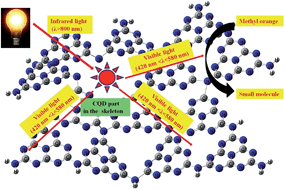
J. Mater. Chem. A, 2015,3, 13189-13192
https://doi.org/10.1039/C5TA02262B
Highly efficient and stable planar heterojunction perovskite solar cells via a low temperature solution process
By combining the slow growth of the perovskite film and the introduction of a ZnO interlayer, highly efficient and stable perovskite solar cells with an efficiency of 16.8% were obtained.
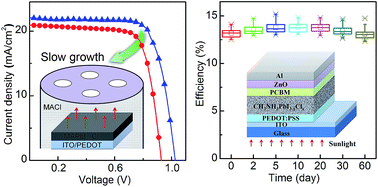
J. Mater. Chem. A, 2015,3, 12133-12138
https://doi.org/10.1039/C5TA01898F
Photovoltaic behaviour of lead methylammonium triiodide perovskite solar cells down to 80 K
Possible ionic motion becomes visible by an impedance spectroscopy technique in the different phases of CH3NH3PbI3.
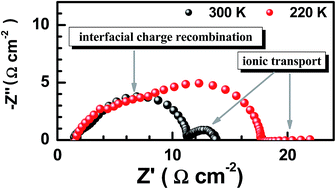
J. Mater. Chem. A, 2015,3, 11762-11767
https://doi.org/10.1039/C5TA02206A
Black titanium oxide nanoarray electrodes for high rate Li-ion microbatteries
Black TiO2−x nanotube arrays, which are synthesized by an electrochemical method and subsequent thermal conversion in a hydrogen atmosphere, are employed as binder-free, free-standing electrodes for high rate Li-ion microbatteries.
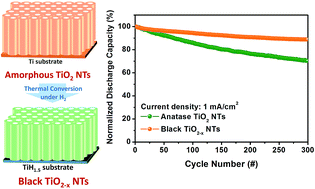
J. Mater. Chem. A, 2015,3, 11183-11188
https://doi.org/10.1039/C5TA01718A
Efficiency exceeding 10% for inverted polymer solar cells with a ZnO/ionic liquid combined cathode interfacial layer
With the ZnO/IL interfacial layer, PTB7-Th : PC71BM i-PSCs can exhibit a champion PCE of 10.15%.
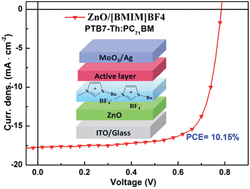
J. Mater. Chem. A, 2015,3, 10660-10665
https://doi.org/10.1039/C5TA00930H
3D flower-structured graphene from CO2 for supercapacitors with ultrahigh areal capacitance at high current density
3D cauliflower-fungus-like graphene (CFG) with hierarchical mesoporous-structure synthesized directly from CO2 exhibited an ultrahigh areal capacitance of 1.16 F cm−2 at a high current density and reached a high efficient-mass-loading of 11.16 mg cm−2. This solves a critical issue of sacrificing mass capacitance with increasing mass loading.
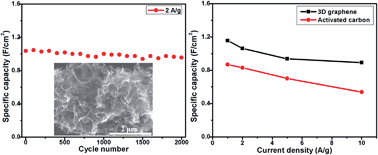
J. Mater. Chem. A, 2015,3, 10183-10187
https://doi.org/10.1039/C5TA01055A
Novel solid metal–organic self-propagation combustion for controllable synthesis of hierarchically porous metal monoliths
A novel solid metal–organic self-propagation combustion route to fabricate hierarchically porous metal monoliths with tunable chemistry, topography and microstructures.
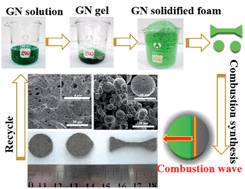
J. Mater. Chem. A, 2015,3, 10179-10182
https://doi.org/10.1039/C5TA01709B
Toward “rocking-chair type” Mg–Li dual-salt batteries
This work is devoted to fundamental electrochemistry on a novel concept of rechargeable battery, "rocking-chair type" Mg–Li dual-salt battery, in which both Mg and Li cations are carrier ions.
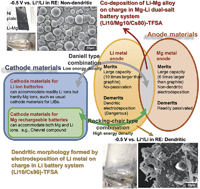
J. Mater. Chem. A, 2015,3, 10188-10194
https://doi.org/10.1039/C5TA01365H
The assembly of vanadium(IV)-substituted Keggin-type polyoxometalate/graphene nanocomposite and its application in photovoltaic system
SiW11V in the nanocomposite can absorb nearly the full light spectrum, and its excited electrons can be transferred through the graphene.

J. Mater. Chem. A, 2015,3, 10174-10178
https://doi.org/10.1039/C5TA01578B
Radically grown obelisk-like ZnO arrays for perovskite solar cell fibers and fabrics through a mild solution process
Perovskite solar cell fibers and fabrics based on aligned ZnO nano-obelisks have been fabricated with efficiencies that are maintained after deformation.
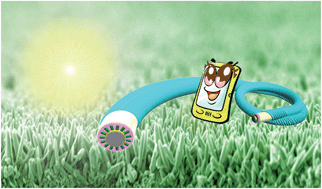
J. Mater. Chem. A, 2015,3, 9406-9410
https://doi.org/10.1039/C5TA01532D
Alternating precursor layer deposition for highly stable perovskite films towards efficient solar cells using vacuum deposition
The high efficiency of planar perovskite solar cells by alternating layer-by-layer vacuum deposition of PbCl2 and CH3NH3I precursor layers is up to 16.03%.
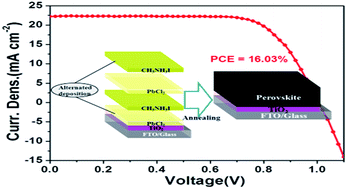
J. Mater. Chem. A, 2015,3, 9401-9405
https://doi.org/10.1039/C5TA01824B
Pd–Ag alloy nanocages: integration of Ag plasmonic properties with Pd active sites for light-driven catalytic hydrogenation
Pd–Ag alloy nanocages have been developed for light-driven catalytic hydrogenation, in which Pd provides active sites for hydrogenation reactions and Ag offers plasmonic properties to convert light into heat.
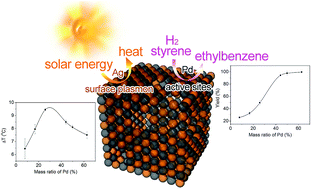
J. Mater. Chem. A, 2015,3, 9390-9394
https://doi.org/10.1039/C5TA00777A
Bioinspired transparent underwater superoleophobic and anti-oil surfaces
A bioinspired method to realize transparent underwater superoleophobic and anti-oil surfaces by a femtosecond laser treatment.
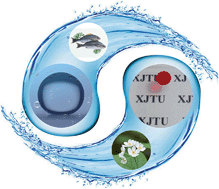
J. Mater. Chem. A, 2015,3, 9379-9384
https://doi.org/10.1039/C5TA01104C
High-performance hole-transporting layer-free conventional perovskite/fullerene heterojunction thin-film solar cells
MAPbI3 perovskite was found to be able to modify the work function of ITO, leading to sufficient charge extraction efficiency at the ITO/perovskite interface. A device with a high power conversion efficiency of >11% was obtained.
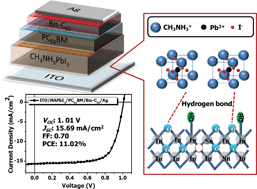
J. Mater. Chem. A, 2015,3, 9128-9132
https://doi.org/10.1039/C5TA01343G
Three-step sequential solution deposition of PbI2-free CH3NH3PbI3 perovskite
We demonstrate a facile approach for preparing PbI2-free CH3NH3PbI3 perovskite films via a three-step sequential solution process.
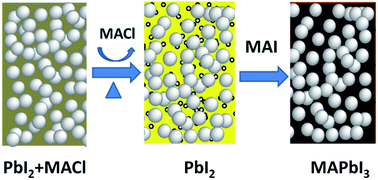
J. Mater. Chem. A, 2015,3, 9086-9091
https://doi.org/10.1039/C4TA05384B
Porous Co–P–Pd nanotube arrays for hydrogen generation by catalyzing the hydrolysis of alkaline NaBH4 solution
Co–P–Pd nanotube arrays with a unique porous nanotube structure and synergistic effect show high catalytic activity for H2 generation.
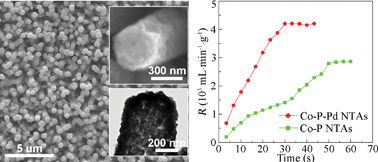
J. Mater. Chem. A, 2015,3, 8250-8255
https://doi.org/10.1039/C5TA00904A
Hexamethylene diisocyanate as an electrolyte additive for high-energy density lithium ion batteries
Hexamethylene diisocyanate can chemically react with the onium ion produced by the oxidation of propylene carbonate and in situ generate a novel interfacial layer that is stable at high potential.
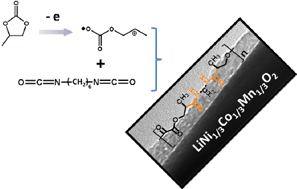
J. Mater. Chem. A, 2015,3, 8246-8249
https://doi.org/10.1039/C4TA07055K
A high-performance metal-free hydrogen-evolution reaction electrocatalyst from bacterium derived carbon
Nitrogen and phosphorus dual-doped mesoporous carbon derived from bacteria as a high performance electrocatalyst for the hydrogen evolution reaction.
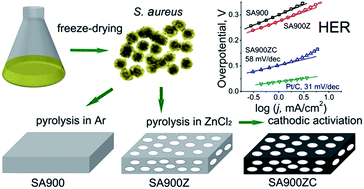
J. Mater. Chem. A, 2015,3, 7210-7214
https://doi.org/10.1039/C5TA00966A
Carbon nanofibers/nanosheets hybrid derived from cornstalks as a sustainable anode for Li-ion batteries
A porous carbon nanofibers/nanosheets hybrid (CNFS) is converted from cornstalk waste, and displays a superhigh surface area and rich porosity. Benefiting from unique structural features, the evolved CNFS possesses an ultrahigh rate capability of 454 mA h g−1 at 3 A g−1.
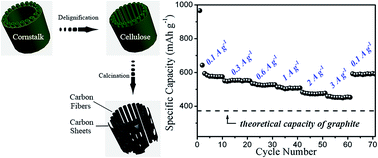
J. Mater. Chem. A, 2015,3, 6742-6746
https://doi.org/10.1039/C5TA00050E
A redox-active gel electrolyte for fiber-shaped supercapacitor with high area specific capacitance
A fiber-shaped supercapacitor with a gel electrolyte containing 2-mercaptopyridine shows a high specific capacitance of 507.02 mF cm−2.
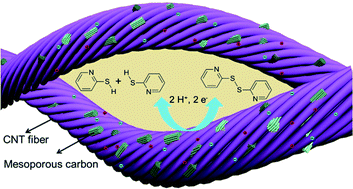
J. Mater. Chem. A, 2015,3, 6286-6290
https://doi.org/10.1039/C5TA00007F
A supermolecular building layer approach for gas separation and storage applications: the eea and rtl MOF platforms for CO2 capture and hydrocarbon separation
The supermolecular building layer (SBL) approach allows deliberate construction of tunable MOFs with contracted pore size permitting enhanced gas selectivity.
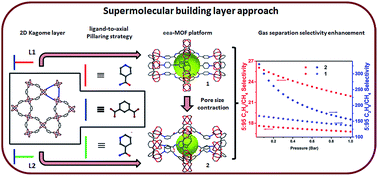
J. Mater. Chem. A, 2015,3, 6276-6281
https://doi.org/10.1039/C4TA07115H
Preparation of hollow Co9S8 nanoneedle arrays as effective counter electrodes for quantum dot-sensitized solar cells
Hollow Co9S8 nanoneedle arrays were directly grown on transparent conducting substrates via a simple template-assisted hydrothermal process. Upon calcination, the resulting CdS/CdSe QDSCs based on the cobalt sulfide counter electrodes exhibited a high power conversion efficiency of 3.72%.
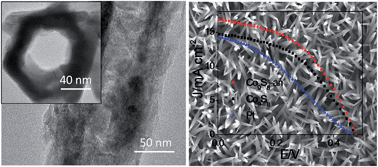
J. Mater. Chem. A, 2015,3, 6311-6314
https://doi.org/10.1039/C4TA06987K
Y-doped BaZrO3 as a chemically stable electrolyte for proton-conducting solid oxide electrolysis cells (SOECs)
A proton-conducting SOEC with chemically stable Y-doped BaZrO3 is fabricated for the first time for electrolysis applications.
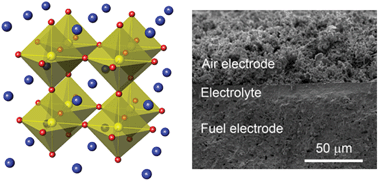
J. Mater. Chem. A, 2015,3, 5815-5819
https://doi.org/10.1039/C4TA07202B
Solvothermal synthesis of hierarchical Eu2O3 nanostructures templated by PS-b-PMAA: morphology control via simple variation of water contents
Morphology evolution of Eu2O3 nanostructures was achieved by simply varying the water content, templated by PS-b-PMAA under solvothermal treatment.

J. Mater. Chem. A, 2015,3, 5789-5793
https://doi.org/10.1039/C4TA07122K
Electrochemical conversion of Ni2(OH)2CO3 into Ni(OH)2 hierarchical nanostructures loaded on a carbon nanotube paper with high electrochemical energy storage performance
Amorphous Ni2(OH)2CO3 nanowire arrays on a CNT paper were electrochemically converted into a Ni(OH)2 nanosheet with high capacitance for supercapacitors.
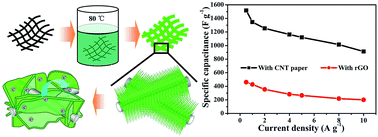
J. Mater. Chem. A, 2015,3, 1875-1878
https://doi.org/10.1039/C4TA06218C
Vulcanization accelerator enabled sulfurized carbon materials for high capacity and high stability of lithium–sulfur batteries
Borrowing the idea from rubber cross linking chemistry, we report the use of a vulcanization accelerator in carbon sulfurization. The resulting Li–S battery exhibits a remarkable increase in discharge capacity while maintaining its outstanding cycling stability and low self-discharge.

J. Mater. Chem. A, 2015,3, 1392-1395
https://doi.org/10.1039/C4TA05938G
Copper hexacyanoferrate nanoparticles as cathode material for aqueous Al-ion batteries
Copper hexacyanoferrate (CuHCF) nanoparticles with Prussian blue structure present the ability to insert Al ions reversibly in aqueous solution.
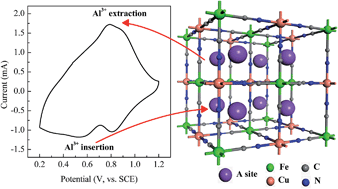
J. Mater. Chem. A, 2015,3, 959-962
https://doi.org/10.1039/C4TA04644G
Light-induced synthesis of photoluminescent carbon nanoparticles for Fe3+ sensing and photocatalytic hydrogen evolution
A new method to produce multifunctional CNPs was developed by a light-induced process.

J. Mater. Chem. A, 2015,3, 136-138
https://doi.org/10.1039/C4TA05155F
Fabrication of conducting polymer/noble metal composite nanorings and their enhanced catalytic properties
We have described a soft-template method that allows the one-pot fabrication of ring-like conducting polymer/noble metal nanocomposites.
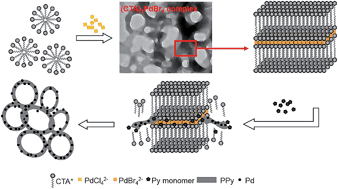
J. Mater. Chem. A, 2015,3, 83-86
https://doi.org/10.1039/C4TA05220J
About this collection
This on-going web collection features all the articles published in Journal of Materials Chemistry A in 2015 marked as HOT, as recommended by referees. Congratulations to all the authors whose articles are featured!